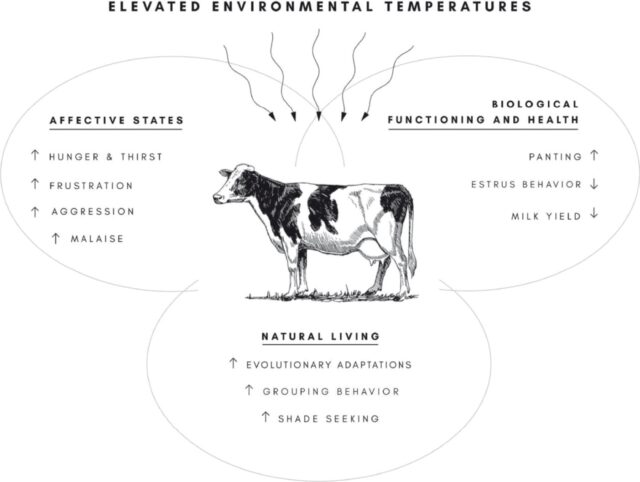Any stress associated to high temperatures that causes alterations in a cattle’s thermoregulatory system is referred to as heat stress. Cattle’s capacity to regulate their body temperature by sweating and panting is hampered in extremely hot, humid or hot, dry conditions, leading to heat stress. Increased body temperature, elevated heart rate, elevated peripheral blood flow, decreased feed intake, and increased water intake are additional consequences of severe heat stress.The body is unable to sustain the core body temperature by sweating and panting (evaporative heat loss mechanism) when the surrounding temperature rises over the Upper Critical Temperature (24°–26°C for exotic and crossbred cattle, 33°C for Zebrose sex toy air jordan 1 retro high og Air Max VaporMax emergencyplumbingpasadena.com kuffert tilbud cheapdesignerhandbagsforyou.com ashevillewireless.org make up astor skin match faraway42.com estrabota.net Air Max VaporMax christianslouboutins.com faraway42.com Air Max VaporMax binkleytruck.com make up astor skin match ashevillewireless.org
Summer stress management in dairy animals
Summer stress sign
Fast and feeble heart rate
Breathing quickly but superficially
Abnormal vital parameters include elevated heart rate, breathing rate, rectal temperature
Peculiar salivation pattern
Unconsciousness
Body temperature of aanimal suffering from heat stroke might reach a high of 106 to 108°F.
Management of summer stress
- Make sure the animals are housed in shade. Trees are the best natural shade source. A thatched roof with a minimum height of nine feet should be supplied in the absence of shade trees.
- A cooler atmosphere can be achieved by thatching the roof with materials such as paddy straw, painting the roof white or installing fake ceiling insulation.
- Build wind-blocking structures out of thatched walls or damp gunny bags or linen.
- In a covered shed, make sure each cow has a ventilator measuring three by one foot.
The best solution in these enclosures is a heavy-duty fan to facilitate ventilation
- Misting/Fogging of water on animals.
- Another way to alleviate heat discomfort in animals is to physically spray or sprinkle water on their bodies.
- Wallowing in the water pond is the most efficient method for buffalo to recover from heat stress.
- Make sure animals have access to enough drinking water throughout the day, preferably in a shaded area.
- It is recommended to practise feeding in the early morning, evening and night.
- To avoid the intense heat, prefer grazing in the early morning and late evening hours.
- Ration density can be raised to deliver the same nutrients while consuming less dry matter. Dietary heat increase is smaller in low-fiber and high-fermentable-carb diets than in high-fiber diets.
- To satisfy the increased demand for minerals during hot weather, make careful to ensure enhanced supplementation of minerals. It is best to use a mineral mixture that is high in potassium.
Conclusion
Summer stress in dairy cattle is a pressing concern with significant economic and production-related consequences. By implementing effective management strategies and prioritizing cow comfort, dairy farmers can navigate the summer months while ensuring the well-being of their herd and maintaining milk production.

Ph.D. Research Scholar, Department of Livestock Production Management, SVP University of Agriculture and Technology, Meerut, 250 110, India

Corresponding author:
Email- *drvetanuj@gmail.com















